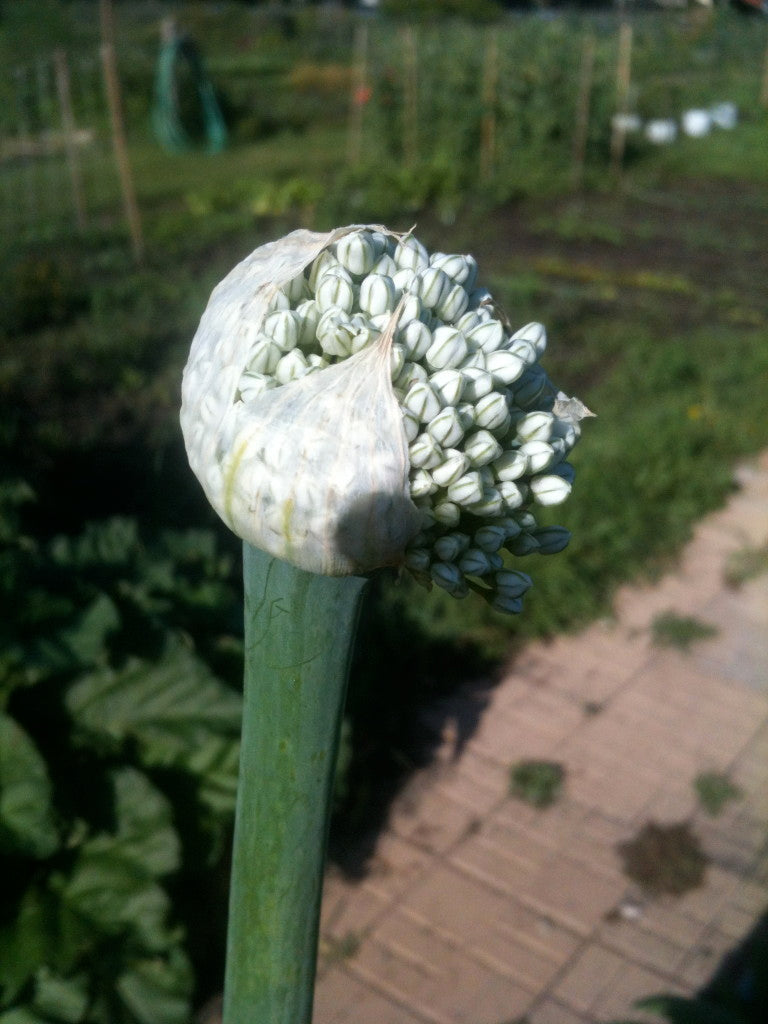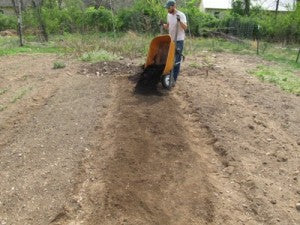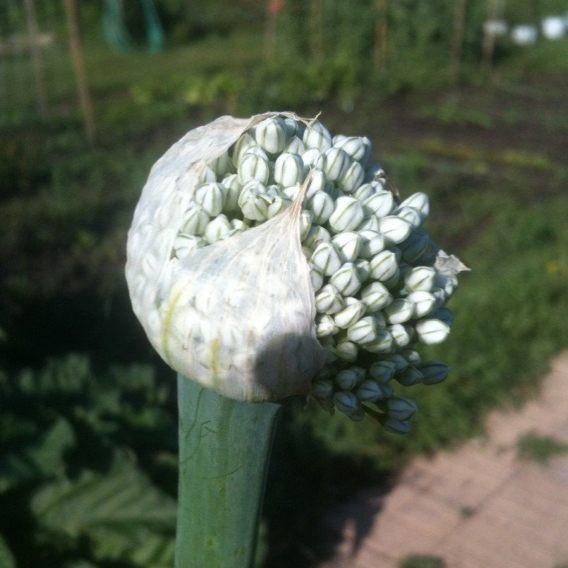 In the trial garden, I am growing onions using two methods. The first one is planting onion seedlings, which is the method I am focusing on this this post. The second is direct seeding. I sowed 4-15' rows of onion seed the first week of April. The rule of thumb for direct seeding bulbing onions is at least 4 weeks before the last frost date. (All information in this post applies to leeks, however bunching onions can be planted and sown all season long.)
In the trial garden, I am growing onions using two methods. The first one is planting onion seedlings, which is the method I am focusing on this this post. The second is direct seeding. I sowed 4-15' rows of onion seed the first week of April. The rule of thumb for direct seeding bulbing onions is at least 4 weeks before the last frost date. (All information in this post applies to leeks, however bunching onions can be planted and sown all season long.)
The first and most important step to transplanting onion seedlings is bed prep. While weeds can be trouble for many vegetable crops, they are especially troublesome for onions. Onions have very little foliage, and need a lot of room to produce a big bulb.
First, weed the bed and clear it of rocks and stones. This should be done at least one week before your desired planting date.
During the week, disturb the top layer of the soil to kill any weed seeds that might germinate. I use a scuffle hoe, my favorite garden tool.
On your planting date, disturb the soil as you did during the week, but do it very thoroughly and deeply to aerate the soil and loosen it for your tiny onion seedlings. Pick out any rocks that might have surfaced.
Next, level the soil and apply a 1-2" think layer of rich, organic compost. This will benefit your onions in two ways: it will provide a good dose of nutrients and act as a mulch to keep weeds from germinating and choking your onions. We will mulch with straw after the onions grow a bit in a few weeks.
A good 1-2" layer of compost for our 3x15' beds is 2 wheelbarrow loads. After hauling the loads, spread the compost evenly over the surface of the bed.


 To begin planting, mark where the rows will be and then make the holes spaced out in the rows.
To begin planting, mark where the rows will be and then make the holes spaced out in the rows.
I plant onions in groups of three, 12" apart, in rows 10" apart. Each onion plant needs 4" of space, so if you do single plants in each hole, space the holes 4". I mark where the rows will be by drawing a line in the soil, then I use a 1/2" x 2' piece of conduit with the 12" mark indicated with permanent marker to measure the distance between the holes. I use another piece of conduit to make the holes, simply by inserting the conduit 12" apart from the first in the row and push it into the ground about 2" beyond the layer of compost. You can also purchase a wooden dibble for this purpose, but might be able to make do with items from your tool shed as I have.
 Make all the holes in the bed, using my method, or one that works with your resources.
Make all the holes in the bed, using my method, or one that works with your resources.
 If planting different varieties of onions, count the number of holes you have made and figure out how many of each type and what their placement should be. I plant in blocks, making sure distinct varieties are not next to each other so I can tell them a part, just in case my labels wear out. For example, Clear Dawn and New York Early are not planted next to each other. That way there is no confusion at harvest time when I will harvest, weigh and compare these onions, both of which are yellow-skinned and medium-sized.
If planting different varieties of onions, count the number of holes you have made and figure out how many of each type and what their placement should be. I plant in blocks, making sure distinct varieties are not next to each other so I can tell them a part, just in case my labels wear out. For example, Clear Dawn and New York Early are not planted next to each other. That way there is no confusion at harvest time when I will harvest, weigh and compare these onions, both of which are yellow-skinned and medium-sized.
Once you have made the holes and figured out what will go where, start planting. Gently break apart the onion plants and select the largest, healthiest looking plants. Take care not to break the roots off. Group similar sized plants together. (If a very large seedling is placed with two very small ones, chances are their bulbs will grow to a similar ratio.)
Lay out the groups of 3 onions next the the holes. Now start planting. Make sure the roots have enough depth to lay vertically in the hole. Do not smash the root into a shallow hole. Hold the onion seedlings so that the green part will be above the soil level, and with the other hand, gently and firmly fill in hole around the roots and base of the seedling. Fill the compost back over any exposed garden soil around the seedling so no weeds pop up right next to them.
Now, make sure your new plantings are watered in well, whether by steady rain or a deep soaking. They should be watered thoroughly for the next week after planting, especially if it happens to be dry. Throughout the season, onions need about 1" of water per week. Using a drip system is best, since it sends the water right to the root.
-It's best to plan on planting on a cloudy day before rain. If this is not possible, plant in the evening and have water on hand to hydrate the onions as you plant them.
-You can plant onions closer than 4" per plant if you thin them in early June. Use as scallions, or if allowed to grow a small bulb, as fresh spring onions.
As my garden grows, so will these posts! Stay tuned for more on caring for onions through the season and much more.











